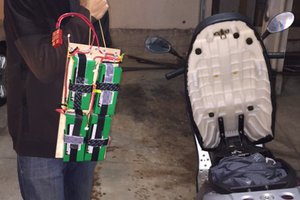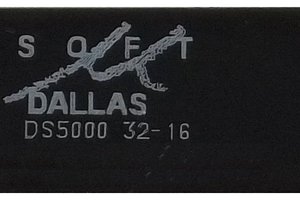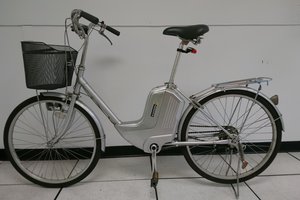Greetings fellow Enthusiasts
Let me introduce myself. I'm Bones MacGyver. I like to make sparks.
I'm going to do my best to help out the community with their battery woes.
By no means am I a battery expert. But I have used and abused MANY Ni-Cd cells (and other types) to see what works best.
Interested? Read on...
I will try to make it as beginner friendly as possible without getting boring for the more advanced.
For the types of circuits discussed on this site (well my projects), miniature battery size is a must. The most important thing in my opinion is dependable batteries. (C'mon now, what good is a shot G*n with shells that are duds!!)
I know a lot of you must have issues with batteries failing. Most of you probably use re-chargeable Ni-Cd batteries. I know I DID use a lot myself.
Ni-Cd's are great for high drain devices that get used frequently. Ex: Cordless Drill
The MAH rating or Milliamp hour rating defines how long your battery can supply voltage to a load at a determined number of Amps
Most Problems arise due to under-use or over charging.
Let me Explain:
You should charge a 9.6v 350Mah Ni-Cd battery pack (8 series connected 1.2v cells) At the recommended current ( for the battery in this example we would charge it at max 0.3A or 30Ma for 14 hours)
It's best to charge Ni-Cd batteries at minimum current for a longer time period. This is because of the chemical reactions taking place in the battery. After all, batteries are just containers that house a chemical reaction. We know this method works well because Ni-Cd Technology is antique Literally.
If you store the Battery pack for too long without using it, the cells in the battery undergo a reverse charging process and they can be damaged irreversibly
What happens is if you don't use the (Ni-Cd) batteries often, they develop what are called “whiskers” by battery enthusiasts. These whiskers are really just a crystalline chemical deposit on the Anode of the cell. The anode is marked with the + (positive) on the outside of the battery. The other half of the cell is called the Cathode. The Cathode is marked – (negative). The anode and cathode are basically just two dissimilar metals. There is also an electrolyte. The electrolyte is the medium that helps the chemical magic take place (electricity).
One way you can store them safely is by using the “trickle charging” method. This would be a good idea. Trickle charging involves constantly charging the cells at an extremely low rate. Small solar panels are a good option. Im not going in to details here. Think solar garden lights..
Some Ni-|Cd chargers are no good to say the least. They have no way to determine if your cells are working correctly. The cheap ones are simply a rectified transformer that you plug in the wall. In my opinion they are unsafe. If you must use this type of charger PLEASE use a plug-in Lamp type Timer to limit the time the charger is turned on.
Most of you don't care about all the science behind how the battery works. If you are interested in battery chemistry there are tons of sites online specifically dedicated to the subject.
I always liked Ni-Cd batteries. They are high power and lightweight
But in my head something kept saying to me “There must be something better”
With all the modern developments in battery technology like Lithium polymer, Lithium Ion, Lithium Iron phosphate I knew one would “fit the bill” per say.
I thought to myself: “ What do the big boy's use”
You all know who I mean. The big fancy 5 letter word.
Ok one more hint: Your local LEO's and military probably have these devices to torture detainee's and put your grandmother in her place when she “steps out of line”.
Wire and darts ring a bell?
Well the solution they have is simple and effective.
They power they're toys with nonrechargeable3V 123A Lithium Camera cells
2 cells are enough to power they're torture/grandma killin devices...
Primary (non rechargeable) lithium 123 cells" have a voltage of 3.0-3.1V typically when they're fresh.
Theses cells...
Read more » Bones Macgyver
Bones Macgyver

 Solderking
Solderking
 microcontrollerprog
microcontrollerprog
 Lucas Rangit MAGASWERAN
Lucas Rangit MAGASWERAN